Discover 11 hidden attractions, cool sights, and unusual things to do in Nijmegen (Netherlands). Don't miss out on these must-see attractions: Valkhof Museum, Afrika Museum, and Jonkerbos War Cemetery. Also, be sure to include Lindenberg Nijmegen Culture House in your itinerary.
Below, you can find the list of the most amazing places you should visit in Nijmegen (Gelderland).
Table of Contents
Valkhof Museum
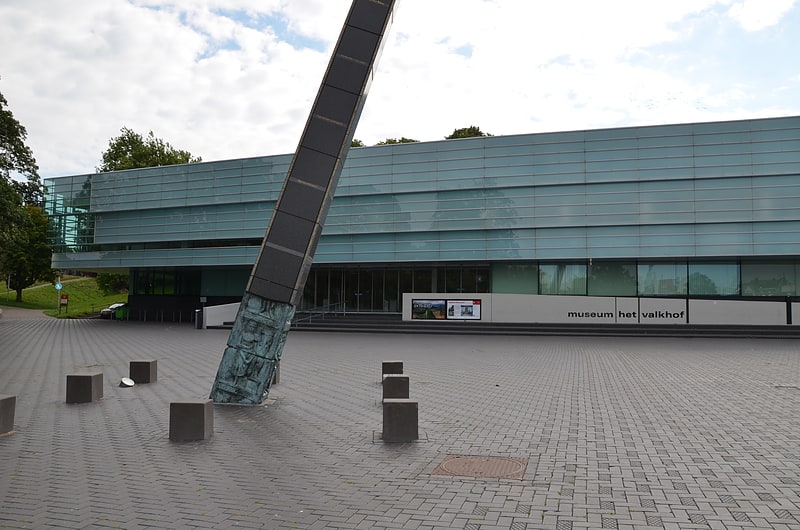
Also known as: Museum Het Valkhof
Futuristic classical and modern art museum. The Valkhof Museum is an archaeology and art museum in Nijmegen, Netherlands.
The museum has existed since 1999, created as a merger between the G. M. Kam museum of archaeology and the Commanderie van St. Jan museum of classical and modern art. The museum's collection includes a large and important collection of local Roman archaeological finds and art (mostly modern).
The museum stands on the edge of the Valkhof park, site of a Roman army camp and a citadel built by Charlemagne. The museum's building was designed by Dutch architect Ben van Berkel and was opened on 14 September 1999 by Queen Beatrix.
In November 2008, the official name of the museum was changed to Valkhof-Kam. This reflected an agreement reached with the heirs of G. M. Kam.[1]
Address: Kelfkensbos 59, 6511 TB Nijmegen (Nijmegen-Centrum)
Afrika Museum
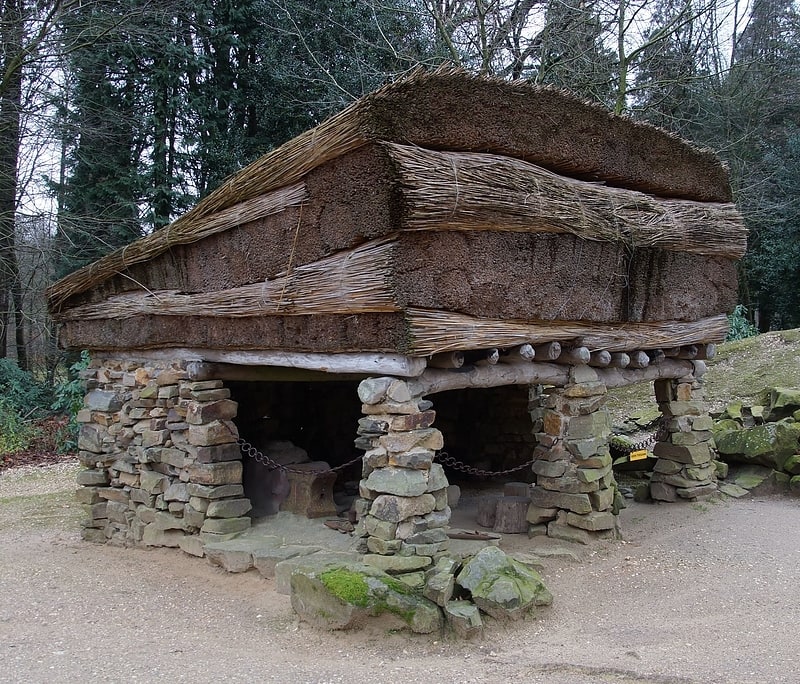
Museum in Heilig Landstichting, Netherlands. The Africa Museum is a museum in Berg en Dal in the Netherlands. The museum on the outskirts of the city of Nijmegen is a complex with indoor as well as open-air display areas, covering art, culture, music, photographs, videos and architecture of Africa. As of 2014, the museum, along with the Tropenmuseum in Amsterdam, and National Museum of Ethnology in Leiden, together make up the National Museum of World Cultures.[2]
Address: Postweg 6, 6571 CS Berg en Dal
Jonkerbos War Cemetery
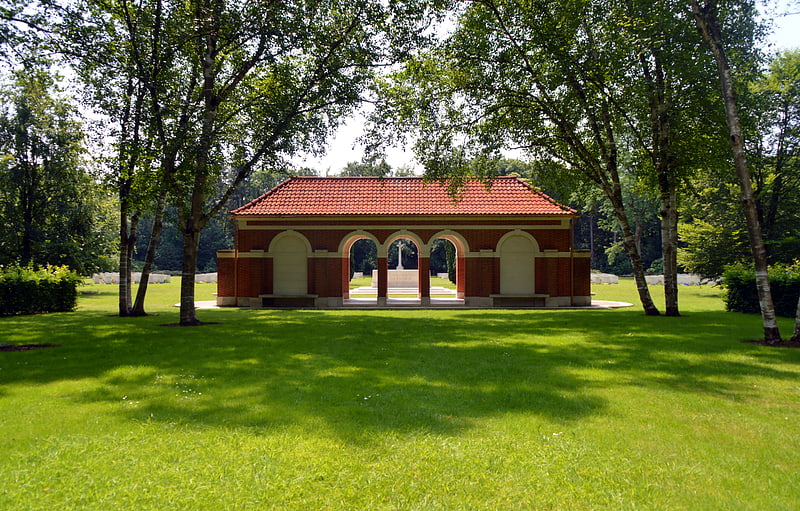
Cemetery. The Jonkerbos War Cemetery and Memorial is located in the town of Nijmegen, Netherlands. The cemetery contains 1,643 British Commonwealth and foreign service personnel of World War II. It was built to a design by Commission architect Philip Hepworth.[3]
Lindenberg Nijmegen Culture House
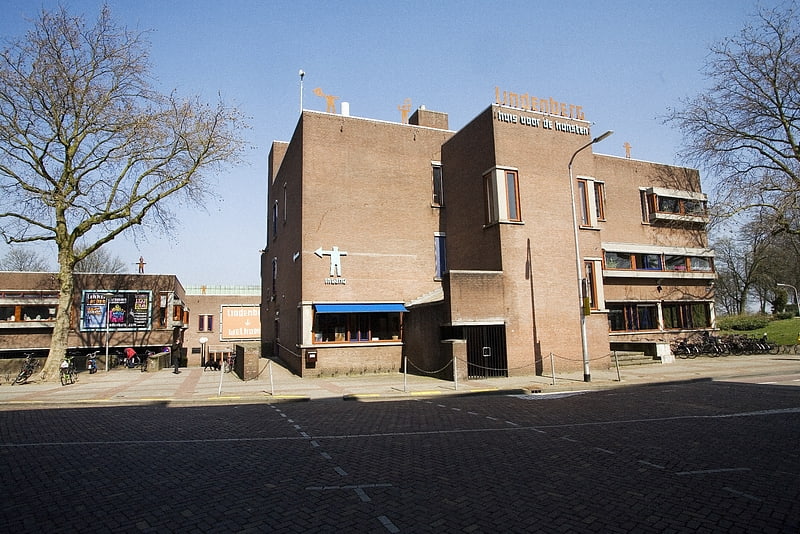
The Lindenberg Nijmegen Culture House, founded in 1972, was a project opened by the Netherlands Minister of Culture, Piet Engels. It is a cultural house in Nijmegen, Netherlands, on the Ridderstraat next to the Valkhof Museum. The Lindenberg operates theatre programs, hosts performances, hosts education courses, and has a cafe. The organization also receives a subsidy from the government.[4]
Address: Ridderstraat 21, 6511 TM Nijmegen (Nijmegen-Centrum)
Waalbrug
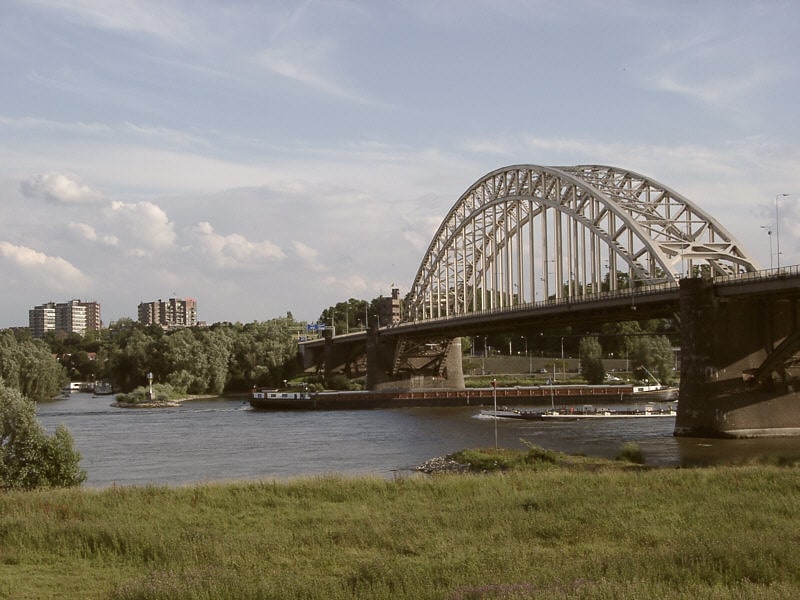
Arch bridge in Nijmegen, Netherlands. The Waalbrug is an arch bridge over the Waal River in Nijmegen, Gelderland, the Netherlands. The full length of the Waalbrug is 604 metres, the middle of the arch being about 65 metres high. The arch itself is 244.1 metres long and was the longest arch in Europe at the time of construction.
Unlike many other bridges from the same period and with the same construction, like the IJsselbrug near Zwolle, the Graafsebrug and the bridge near Arnhem, the Waalbrug is an arch bridge in the literal sense: all forces truly work on the two pylons.[5]
Nijmegen railway bridge
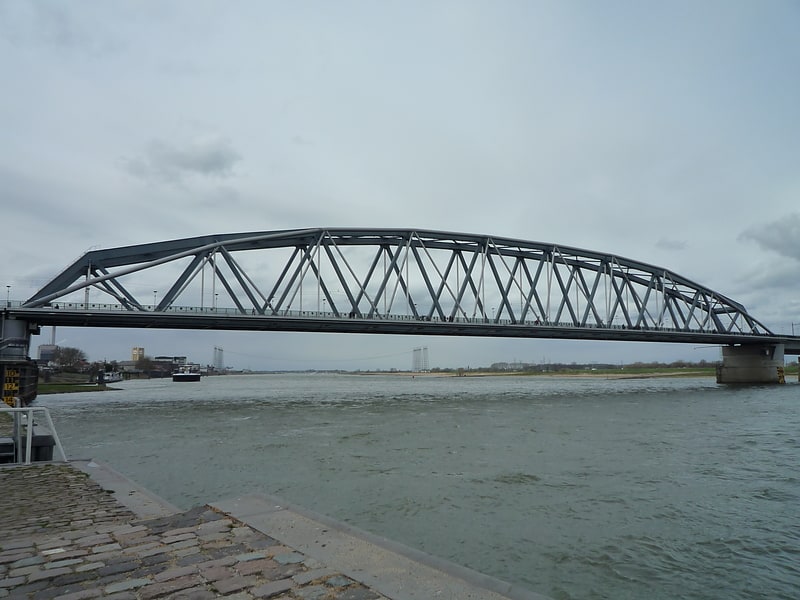
Also known as: Spoorbrug Nijmegen
Truss bridge in Nijmegen, Netherlands. The Nijmegen railway bridge is a truss bridge spanning the River Waal, connecting the city of Nijmegen to the town of Lent in the Netherlands.[6]
Quack-monument
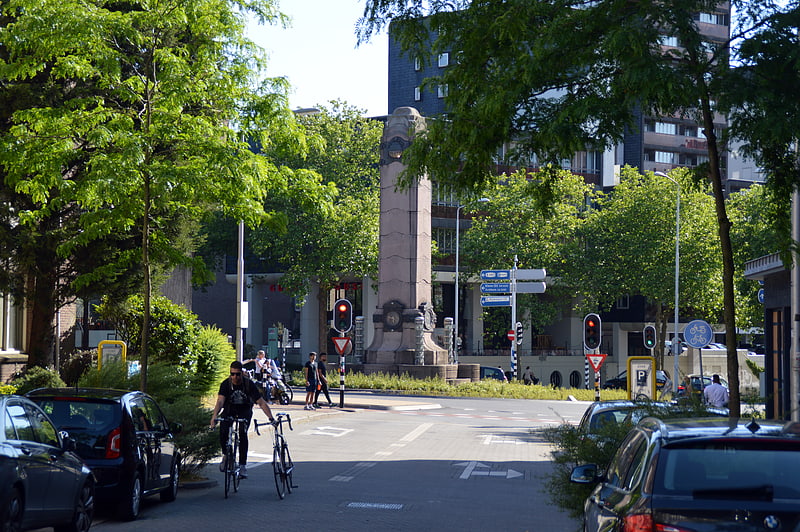
The Quack monument or Marie-Adolffontein is a monument in Nijmegen, in the Dutch province of Gelderland.
The Quack monument was originally founded in 1926 from a legacy of Arnoldus Burchard Adolphus Quack (Nijmegen, 6 April 1842 - Nijmegen, 11 November 1920). Quack was alderman of the municipality of Nijmegen from 1902 to 1919. The monument is named after him and his twin sister Maria (Marie) Christina (Nijmegen, April 6, 1842 - Nijmegen, March 15, 1905). Quack left his legacy to the municipality of Nijmegen under the condition that a fountain, the Marie Adolphron named after his sister, would be erected.
Architect Willem Bijlard designed the monument that contains four fountains and four bells at the base and four lanterns at the top. The lower part is made of granito. The obelisk is made of red granite with carved art-deco ornaments. The lanterns and bells are made of bronze. The ornamental surfaces under the bells were made by stonemason Litjes. 75 m3 of granite and 30 m3 of concrete have been processed.
It was demolished in 1958 because it had to give way to traffic. Several parts, such as the glass parts and the bells were destroyed by, among other things, the bombing of Nijmegen in 1944. The different parts were stored for years. In 1976 there was mention of the monument to be erected in the new Dukenburg district. Eventually the monument was rebuilt in 2000 in the same place where it stood until 1958.
The monument is often compared to a phallus. On World AIDS Day 2004 a huge 'condom' was drawn over the monument.[7]
St Peter Canisius Church
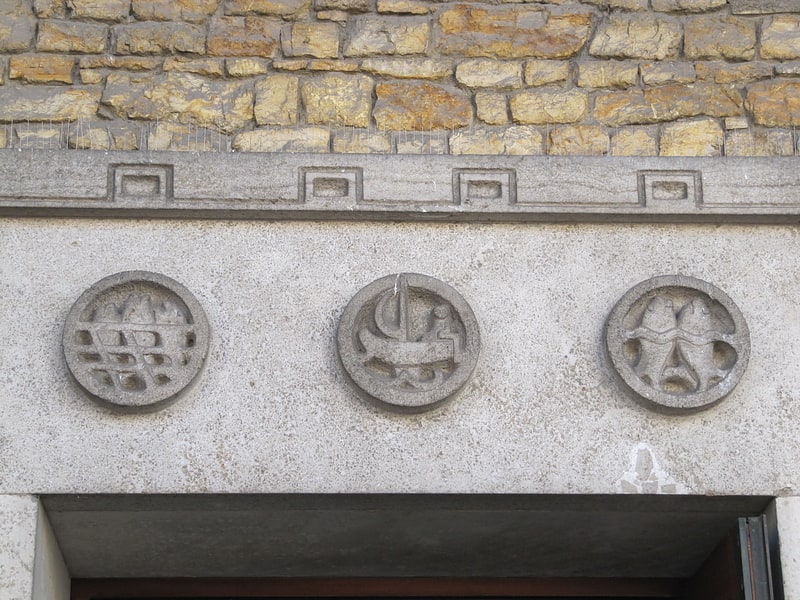
Also known as: Molenstraatkerk
Catholic church in the Netherlands. St Peter Canisius Church is a Roman Catholic Parish church in Nijmegen, Gelderland, Netherlands. It is situated on Molenstraat in the centre of the city. It is run by the Society of Jesus and is in the Diocese of 's-Hertogenbosch. It is built on the site of a 14th-century monastery, which was passed into the hands of the Jesuits in 1818. It was rebuilt in 1896 and again in 1960 after being bombed in the Second World War.[8]
Address: Molenstraat 37, 6511 HA Nijmegen (Nijmegen-Centrum)
Stratemakerstoren

Museum in the Netherlands. The Stratemakerstoren is an early 16th-century bastion on the Waalkade in the Dutch town Nijmegen. It is a rijksmonument and since 1995, it housed a museum. This was closed in April 2015, for major reconstruction.
The Stratemakerstoren is located on the edge of the river Waal, at the foot of the Valkhof at Nijmegen. This bastion was a part of the fortifications of Nijmegen, built in or before 1526. The current name, which means "Road Workers Tower", was already in use in 1569 - the reason for this name is still not exactly known.
The Stratemakerstoren was constructed to protect the adjacent gate, the Veerpoort. The tower often figures on old paintings and prints, where it is seen on the riverbank, at the foot of the Valkhof castle, for example in the painting called the Valkhof at Nijmegen.
Due to technical innovations in warfare, by the end of the 18th century, the round bastion had lost its importance as a defensive stronghold. A rise in the water level of the river Waal also meant that the tower was partly submerged. In 1789, a local carpenter, J. ten Boven, was given permission to build houses on the site of the bastion. He didn't demolish the tower completely, but just built the houses on top of the bastion. In 1987 these houses were demolished, and to almost every one's surprise the tower re-emerged.
From 1995 until 2015, the building was hidden behind a grey wall, and housed a museum. In April 2015, the museum was closed for major reconstruction and restoration of the building. Plan is to re-open in 2016 as De Bastei, a centre for nature and cultural history.[9]
Address: Waalkade 83/84, 6511 XR Nijmegen (Nijmegen-Centrum)
Velorama
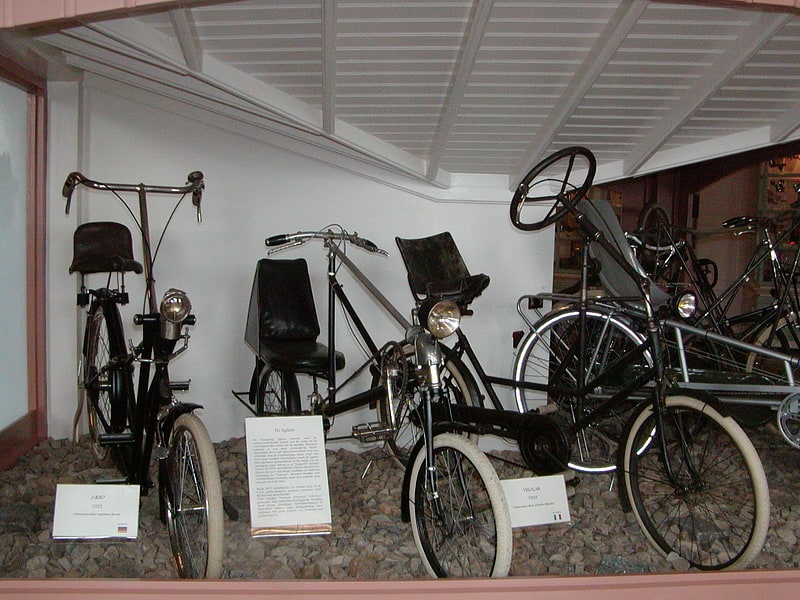
Lots of historic bicycles and memorabilia. The Velorama is the only bicycle museum in the Netherlands. It is located at the Waalkade in the city of Nijmegen.
The museum was founded in 1981 from the private collection of G.F. Moed. In three storeys it shows about 250 exhibits from nearly two centuries. The Velorama owns a large collection of bicycle literature and also preserves the historic archive of the Dutch bicycle manufacturer Gazelle.[10]
Address: Waalkade 107, 6511 XR Nijmegen (Nijmegen-Centrum)
Concertgebouw de Vereeniging
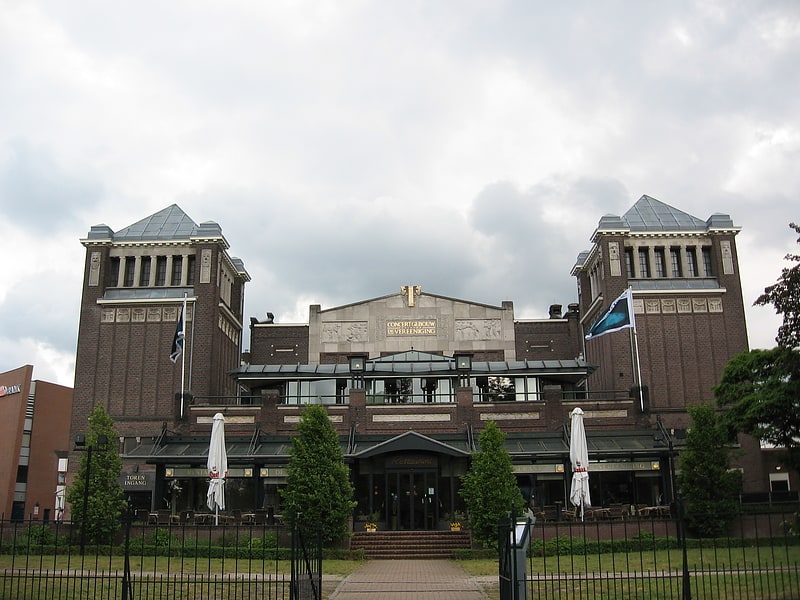
Music hall in Nijmegen, Netherlands. Concertgebouw de Vereeniging is a concert hall located in Nijmegen, Netherlands. The facility officially opened in 1915 and is built in a mixture of Art Nouveau and Art Deco styles. It has a capacity of 1,450 seats, and is renowned for its outstanding acoustics for orchestral music.
Concertgebouw de Vereeniging is a designated Rijksmonument.[11]
Address: Keizer Karelplein 2D, 6511 NC Nijmegen (Nijmegen-Centrum)